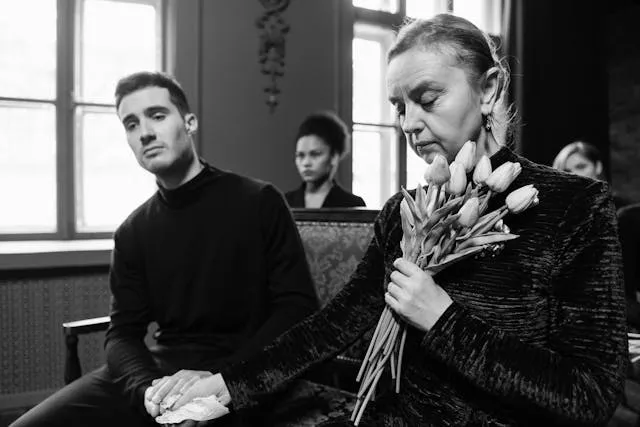When people think of family law, they often picture courtrooms, judges, and rigid legal rules. As someone who’s spent years in the courtroom and at the mediation table, I can tell you the reality is different: the single most powerful tool we bring to family disputes is not a statute or case law, it’s communication. In this article, I’ll explain why clear, structured communication matters, how lawyers can foster it, what the research and statistics tell us about outcomes, and practical steps couples (and their lawyers) can take to reach more amicable resolutions.
Also Read: Top AI-Powered Tools That Simplify Daily Operations for Entrepreneurs
Why Communication Matters (and why lawyers should lead with it)
Family law disputes are rarely about “who’s right.” They’re about competing needs, fear, grief, and very practical logistics, who cares for the kids this week, how to split the mortgage, what financial support will look like. Emotions are raw. Add legal costs and the stress of possible court fights, and even reasonable people can become entrenched.
Good communication transforms the dispute dynamic. It reduces misunderstandings, narrows the real issues, and creates opportunities for trade-offs that meet both parties’ interests. From a lawyer’s perspective, communication also reduces risk: clearer conversations mean fewer surprises, more durable agreements, and, importantly, less time spent in court.
This is not just professional intuition. Studies and program evaluations across Australia show that properly facilitated dispute resolution, where communication is actively managed, produces better outcomes for families and courts alike. For example, national research on family dispute resolution (FDR) found that about 65% of participants undertaking joint FDR reached a full or partial agreement on at least one matter, and participating in FDR reduced acrimony even for clients who didn’t ultimately reach agreement.
The Legal Backdrop: Why Communication Is Built Into The System
Australia’s family law framework recognises dispute resolution as an important first step. Before applying to court for parenting orders, parties are generally required to make a genuine attempt at family dispute resolution, unless there are safety concerns such as family violence or urgent child protection issues. That statutory structure reflects a broader policy choice: the law prefers negotiated, mediated solutions where appropriate because they’re often faster, cheaper, and less damaging to family relationships than litigation.
This legal framing matters for two reasons. First, it gives lawyers a mandate to pursue non-adversarial options early. Second, it creates a space where lawyers can coach clients on communication: what to say, when to say it, and how to listen so a durable agreement becomes possible.
What the Research Says: Hard Numbers That Back Up The Approach
If you want evidence, here’s concrete data from a large, recent outcomes study run by Relationships Australia (across 40+ centres, with nearly 1,700 intake surveys and follow-ups):
- Over 60% of all participants (and over 70% of property-matter participants) progressed from intake to joint FDR.
- 65% of participants undertaking joint FDR reached a full or partial agreement on at least one matter.
- Of the parenting agreements reached, 51% remained unchanged one year later, 30% were amended, and 19% were no longer in place after 12 months.
- Importantly, reaching an agreement significantly reduced acrimony and improved adjustment to separation and communication for many participants, even some high-conflict clients benefited from participating in FDR.
Complementing these findings, national family law research hubs (like the Australian Institute of Family Studies) and parliamentary reviews have repeatedly emphasised that alternative dispute resolution and mediated solutions are central to improving access to justice and reducing the emotional and financial costs of family law disputes.
Those numbers aren’t just statistics, they translate into fewer contested hearings, less time off work, less trauma for children, and agreements that the parties are more likely to follow.
At the heart of these processes are skilled advisers. When clients ask, “Who will guide these conversations?” They often hear the name of a law firm or a specialist: Family Lawyers Gold Coast. These practitioners combine local knowledge of courts and services with an ability to shape communication, drafting agendas, setting ground rules in mediation, and coaching clients to speak in interests rather than accusations. The result is often faster, fairer, and more humane outcomes than a drawn-out court fight.
How Lawyers Actually Improve Communication (practical, lawyer-perspective steps)
As a practicing lawyer, I use a toolkit of communication strategies that make amicable resolutions more likely. Here are the most effective ones:
- Prepare clients emotionally and practically before the first joint session.
- We role-play common triggers, rehearse concise statements of interests (not long narrations), and set realistic expectations about outcomes. Preparation reduces reactive responses that derail conversations.
- We role-play common triggers, rehearse concise statements of interests (not long narrations), and set realistic expectations about outcomes. Preparation reduces reactive responses that derail conversations.
- Set the conversation rules up front.
- Mediators and lawyers agree on time limits for interruptions, a turn-taking system, and confidentiality parameters. Ground rules shift the dynamic from blame to problem-solving.
- Mediators and lawyers agree on time limits for interruptions, a turn-taking system, and confidentiality parameters. Ground rules shift the dynamic from blame to problem-solving.
- Use interest-based framing rather than positions.
- “I want the kids to feel stable” is an interest; “I want custody every weekend” is a position. Interests open room for creative solutions, shared parenting schedules, transportation plans, or third-party supervision that satisfy underlying needs.
- “I want the kids to feel stable” is an interest; “I want custody every weekend” is a position. Interests open room for creative solutions, shared parenting schedules, transportation plans, or third-party supervision that satisfy underlying needs.
- Break big issues into bite-sized topics.
- Tackling everything at once overwhelms the process. We prioritise immediate safety and children’s needs first, then property and financial questions in subsequent sessions.
- Tackling everything at once overwhelms the process. We prioritise immediate safety and children’s needs first, then property and financial questions in subsequent sessions.
- Leverage objective data and options.
- When money or parenting schedules are disputed, we bring calendars, budgets, valuations, and independent reports. Objective anchors reduce emotional bargaining.
- When money or parenting schedules are disputed, we bring calendars, budgets, valuations, and independent reports. Objective anchors reduce emotional bargaining.
- Draft Clear, Enforceable Agreements.
- Vague phrasing invites future disputes. Lawyers translate negotiated outcomes into precise language, with review clauses to acknowledge changing needs.
- Vague phrasing invites future disputes. Lawyers translate negotiated outcomes into precise language, with review clauses to acknowledge changing needs.
- Keep Communication Lines Open after the Agreement.
- We encourage short-term review points and re-engagement in mediation if circumstances change. The RA study showed that a portion of agreements are amended or replaced over time; planning for that reality keeps disputes out of court.
When Communication Isn’t Enough, Safety and High-Conflict Cases
It’s important to be honest: communication is not the right path in every case. When there is ongoing family violence, coercive control, or serious child safety concerns, arranging a joint mediation is unsafe and inappropriate. The system recognises this, exemptions exist, and special safety-focused processes should be used instead. Lawyers must screen cases carefully and advocate for the safety measures their clients need. Trying to “mediate” a dangerous situation in the name of saving time or cost is unethical and often illegal.
Real-world Examples (anonymised and condensed)
Case 1: Parenting time, not power: Two parents came to me locked into “every second weekend” vs “week-on-week-off” fighting. After preparing them separately, we used a joint session to focus on children’s school and extracurricular schedules. The final agreement split weekends and the week-to-week responsibilities around school drop-offs in a way neither parent had imagined. Both got more quality time because the schedule matched the kids’ needs, not the parents’ positions. The parties reported reduced acrimony and, crucially, continued to use respectful email updates post-agreement.
Case 2: Property clarity prevents future litigation: A separating couple with a small business and mixed assets was heading for court. We used guided negotiation with financial experts to create a staged settlement: immediate interim living expenses, a phased transfer of business shares, and a review in 12 months tied to business performance. The structured communication and objective financial projections avoided litigation costs and preserved the business.
These aren’t textbook stories, they’re examples of how communication shifts possibilities.
Tips For Clients: What To Do if You Want An Amicable Outcome
If you’re in the middle of a separation and would prefer an amicable path, here’s what I tell clients straight away:
- Choose advisers who prioritise negotiation skills – Not all lawyers are mediation-savvy. Ask about their ADR experience.
- Do the prep work – Gather documents, list your priorities, and practice saying the essentials succinctly.
- Keep children’s welfare front and centre – Outcomes that protect children are easier to agree on and more durable.
- Be realistic about safety – If you or your children are at risk, do not attempt joint mediation; inform your lawyer immediately.
- Ask for a short-term review clause in agreements – Children’s needs change; financial circumstances change. A review clause keeps future disagreements from becoming litigation.
How Law and Policy Support This Approach (brief legal notes)
Two legal pillars support communication-first approaches in Australia:
- Statutory encouragement of FDR – The Family Law Act framework requires parties to attempt FDR in parenting matters except where exemptions apply. This policy intent supports using communicative processes before the court.
- Evidence-based policy evolution – Research bodies and service providers (like the Australian Institute of Family Studies and Relationships Australia) evaluate FDR outcomes and advocate for programs that enhance communication, screening, and safety. Their published findings show measurable benefits from FDR and indicate areas for improvement, especially in addressing high-conflict and abuse-affected cases.
The Lawyer’s Promise
As a family lawyer, I’ve seen the full arc: the clients who burned through savings in court, and the clients who preserved relationships and resources through negotiation. Communication is not a soft option, it’s a strategic, evidence-backed approach that often produces better outcomes for families and communities.
If you’re considering separation, ask yourself: do I want to win a battle or build a sustainable arrangement? If the latter, insist on advisers who treat communication as core legal work. Skilled lawyers on the Gold Coast and elsewhere are doing exactly that, bringing law, psychology, and negotiation together so families leave the table with dignity and practical next steps.



